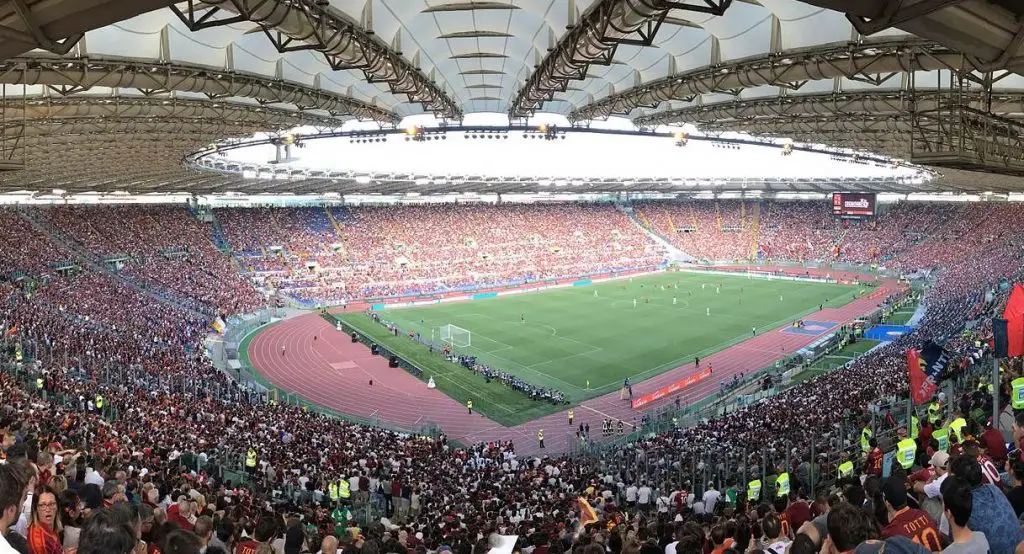Even though we’re not big fans of football stadiums that feature an athletics track, there are always exceptions to the rule. This magnificent stadium in the Italian capital of Rome qualifies as such.
In this article, we’ll take a closer look at some of the most interesting facts about the Stadio Olimpico so you can learn everything about this huge sports stadium in Europe and its history.
1. It’s located in a sports complex that was built by Mussolini
The Stadio Olimpico, which translates to the “Olympic Stadium,” is a huge sports stadium located in the northwestern outskirts of Rome.
It’s situated on the slopes of the Monte Mario, one of the highest hills in Rome at an elevation level of 139 meters (456 feet) above sea level. It lies outside of the boundaries of ancient Rome s it’s not one of the “7 Hills of Rome.”
The stadium is the centerpiece of a much larger sports complex called the “Foro Italico,” a complex that was built during the Fascist era between 1928 and 1938. It was therefore originally known as the “Foro Mussolini” but renamed after the Second World War.
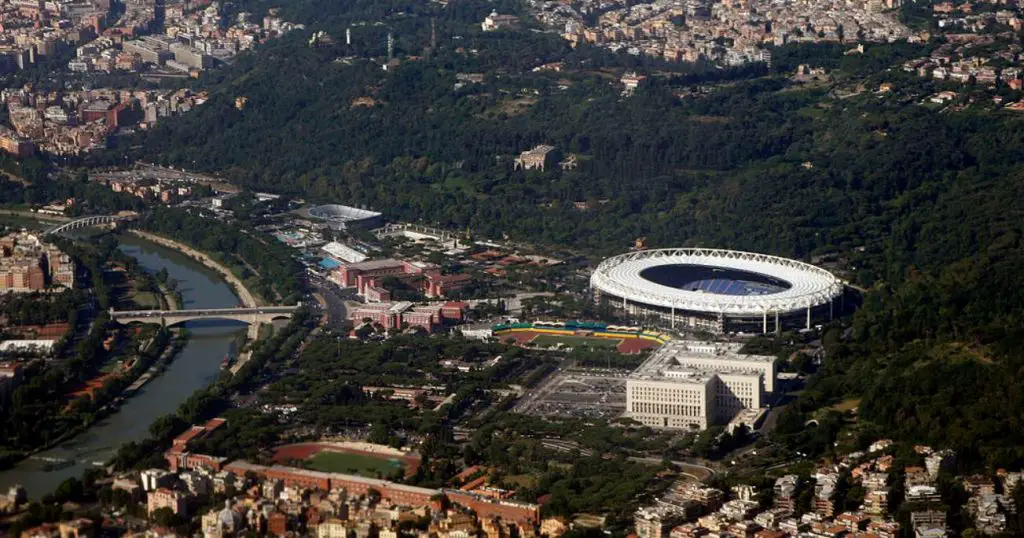
2. It’s the second-largest sports stadium in Italy
The stadium has a seating capacity of 70,634 which makes it the second-largest stadium in Itay by seating capacity after San Siro in Milan (75,923).
This number has been drastically reduced since completion because it once held over 100,000 spectators. Granted, this was a time that the regulations weren’t as strict and multiple tiers featured standing places.
The stadium is also used for concerts and has a capacity of 75,000 during events that the stage is positioned at the end, and a capacity of 85,000 when the stage is located in the center.
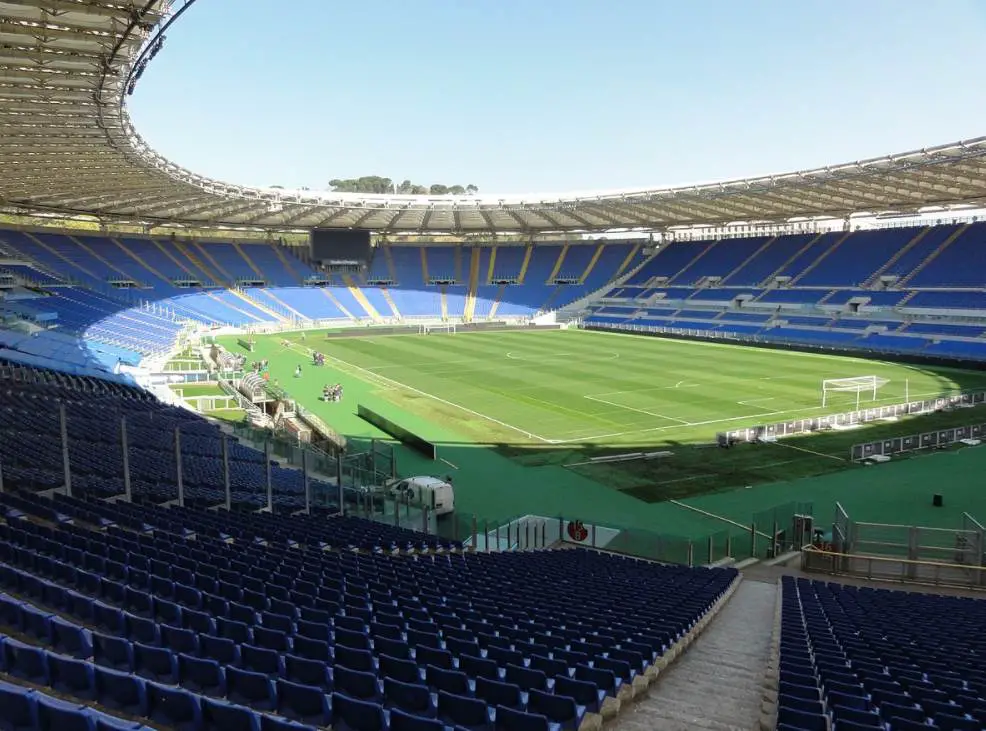
3. The stadium wasn’t completed until the 1950s
The original version of the stadium was completed between 1927 and 1932 and featured one tier of stands. The stadium was called the “Stadio dei Cipressi” back then, and the construction of the second tier of stairs was halted in 1937 due to the outbreak of the war.
This means that the incompleted stadium wasn’t finished for the event it was intended to become the centerpiece of in 1940.
Work resumed following the conclusion of World War II in December 1950. It was eventually completed and officially inaugurated with a football game between Italy and Hungary on May 17, 1953.
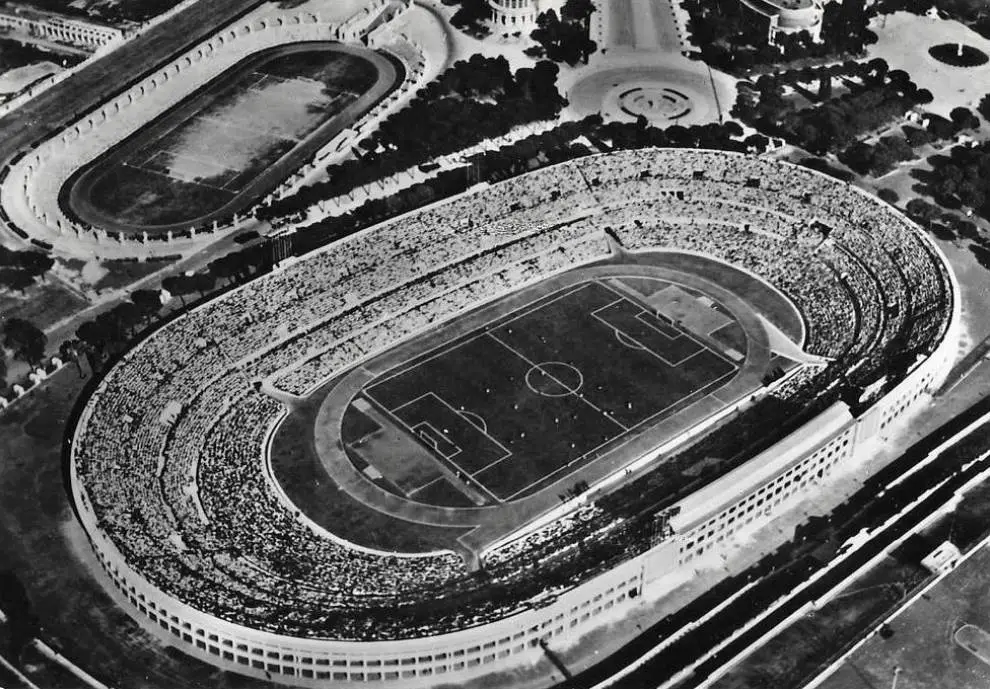
4. It was completely rebuilt for the 1990 FIFA World Cup
The stadium has been the venue of countless important football (or soccer) games throughout its history.
It has been the main venue of the 1968, 1980, and 2020 UEFA European football championships, as well as 2 UEFA Champions League finals in 1996 and 2009.
The most important football tournament that used the stadium as its main venue was the FIFA 1990 World Championships. This also means that the stadium needed a serious upgrade.
Because the plans were constantly changed, the old Stadio Olimpico ended up being completely demolished and rebuilt in reinforced concrete between 1987 and 1990. Only the “Tribuna Trevere” was spared and expanded instead.
The stadium eventually hosted 5 matches of the Italian national team during this tournament, as well as the final between Argentina and West Germany which ended in a 1-0 victory for the Germans.
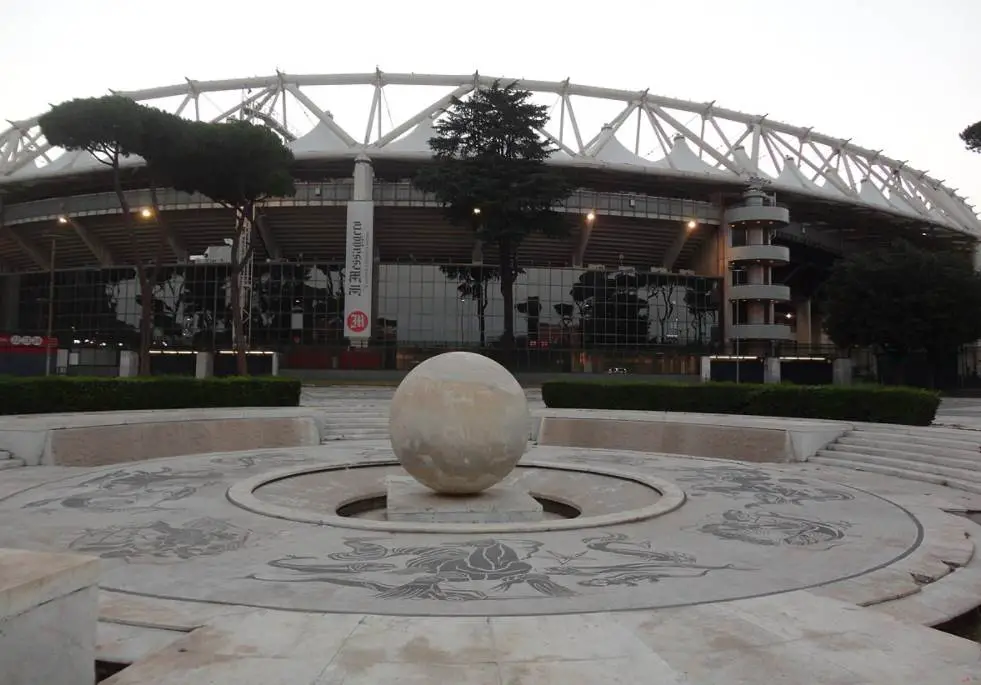
5. The 2008 renovation project turned it into a modern sports temple
Even though rebuilding the stadium turned it into a qualifying stadium for major tournaments, the regulations became even stricter during the early 2000s.
This means that another upgrade was needed for the Stadio Olimpico to qualify to become the venue of the 2009 UEFA Champions League final.
Even though the appearance of the stadium hardly changed, multiple upgrades were made in terms of security. All seats were changed as well and new press boxes and dressing rooms were built.
The seating capacity was also further reduced to 70,634 seats and high-definition LED screens were installed to turn the amazing stadium into an enthralling modern sports temple!
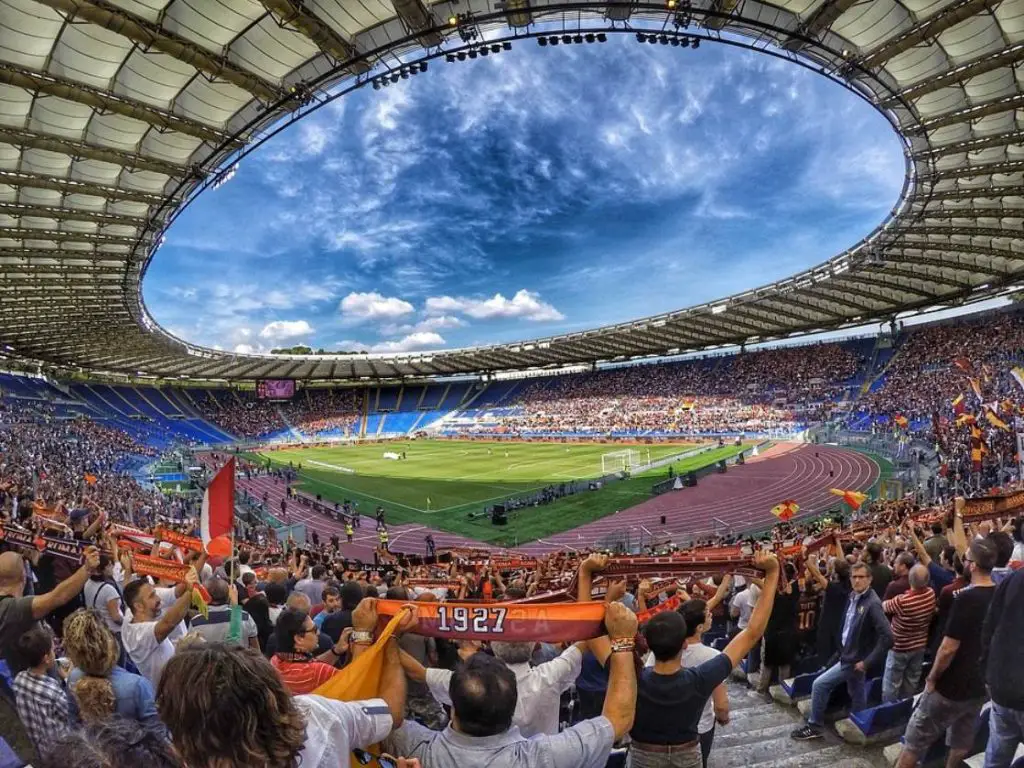
More interesting facts about the Stadio Olimpico
6. The Foro Italico of which the stadium is the centerpiece was commissioned by Benito Mussolini. This enormous project was started to attempt and get the 1940 Summer Olympics to Rome.
This eventually never happened due to the course of history, but this doesn’t mean that its construction was in vain. Apart from the stadium, it’s still the venue of the Italian Open tennis tournament as well as the ATP Masters. It also featured a large swimming complex called the “Stadio Olimpico del Nuoto.”
7. The first major event to be held at the stadium was the Summer Olympics of 1960. This was the original plan for the stadium in 1940 and it eventually happened 2 decades later.
The stadium hosted both the opening and closing ceremonies as well as the athletics competition. This was followed by numerous important athletics events throughout its history.
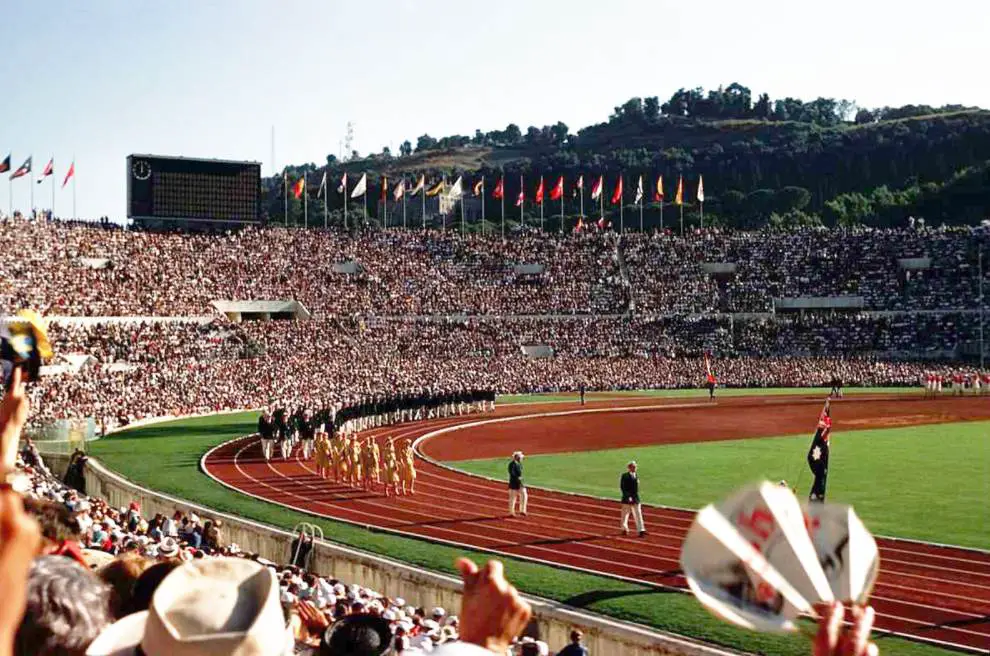
8. The record attendance at the stadium was achieved in the year 1998 when over 100,000 people witnessed a concert by famous Italian singer Claudio Baglioni.
On June 6 of the year, the stage was placed in the center of the pitch, and most of the seats inside the stadium were occupied as well.
9. The stadium not only hosts matches of the Italian national football team but also those of the Italian national rugby union team. It has been the venue of rugby union matches ever since it was completed in the 1950s.
10. The stadium is the home venue of two Italian football clubs, A.S. Roma and Lazio. If you ever get a chance to visit the stadium during a game, then a derby match played between these two clubs would be the best way to experience the most amazing atmosphere.
